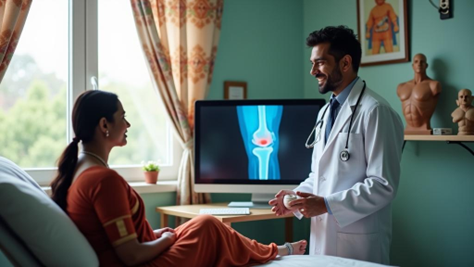Understanding knee health plays a crucial role in maintaining an active lifestyle. Among various knee issues, patellar dislocation requires specific attention as it affects many people, especially athletes and youth. Knowing how it occurs and the best ways to manage it can prevent further injury and promote recovery. Proper treatment and preventive care are essential to avoid repeated dislocations and ensure overall knee health.

Understanding Patellar Dislocation: Anatomy and Causes
The patella, or kneecap, is a small bone at the front of your knee. It sits in a groove on the thigh bone, allowing smooth movement. When the patella slips out of place, this is known as patellar dislocation. Typically, this occurs when the kneecap slides to the side (laterally), which is the most common type.
Several factors can lead to this condition:
- Anatomical factors: A shallow groove (trochlear groove) where the kneecap rests can increase risk.
- Knee alignment: Having a high Q-angle (the angle between hip and knee) can lead to instability.
- Muscle weakness: Weak quadriceps or an unbalanced vastus medialis obliquus (VMO) increases vulnerability.
- Previous injuries: Those with past issues of instability are at higher risk.
- Direct trauma: Any impact on the knee can displace the kneecap.
- Genetics: Some people are more prone due to genetic predispositions.
Causes of kneecap dislocation often tie back to these risk factors, especially in sports settings where rapid twisting or contact occurs.
Symptoms and Importance of Early Diagnosis
The symptoms of kneecap dislocation are usually evident:
- Intense knee pain that comes on suddenly
- Noticeable deformity if the kneecap is out of position
- Difficulty in straightening the knee
- Swelling and bruising in the knee area
- A sensation of popping at the time of injury
Early diagnosis is vital. It allows for effective dislocated patella management and smoother recovery. Doctors often use a combination of physical exams, along with X-rays and MRIs, to confirm the dislocation. This helps rule out other injuries like fractures.
Treatment Options: Non-Surgical and Surgical Approaches
For many, non-surgical methods are the first approach. These may include:
- RICE (Rest, Ice, Compression, Elevation)
- Bracing to stabilize the knee
- Physical therapy focusing on strengthening and improving range of motion
At times, surgery for kneecap dislocation becomes necessary, especially if the dislocation recurs or if there’s significant damage to ligaments or cartilage. Options include:
- Lateral retinacular release, which involves cutting the tight tissues on the outer side of the kneecap.
- Medial patellofemoral ligament (MPFL) reconstruction, which repairs critical supporting ligaments.
Post-surgical recovery is crucial. Patients will likely engage in detailed physical therapy programs to encourage mobility and strength, gradually returning to full activities.
Preventative Measures for Knee Health
Preventing kneecap issues involves measures to stabilize and strengthen the leg muscles:
- Engage in exercises focusing on the quadriceps and VMO.
- Consider lifestyle tweaks like balancing activities to promote knee strength.
- Warm up properly and wear protective gear during sports.
- Address any biomechanical problems to reduce risk.
These strategies can significantly stop further instances of patellar dislocation, supporting robust knee health.
Conclusion and Importance of Professional Care
Patellar dislocation can impact one’s life but with prompt treatment for kneecap dislocation, individuals can recover effectively. It’s important to stay agile while paying attention to knee health.
If you require specialized care, consider consulting with professionals. At Shri Baldev Memorial Hospital, our experts offer exceptional diagnostic and treatment services for patellar dislocation and other related concerns. For more details, contact us today and take the first step towards knee health recovery.



